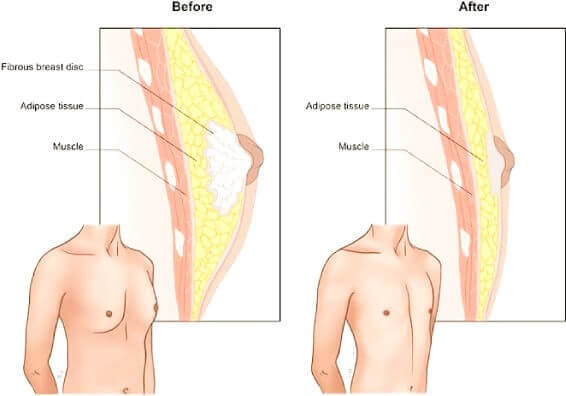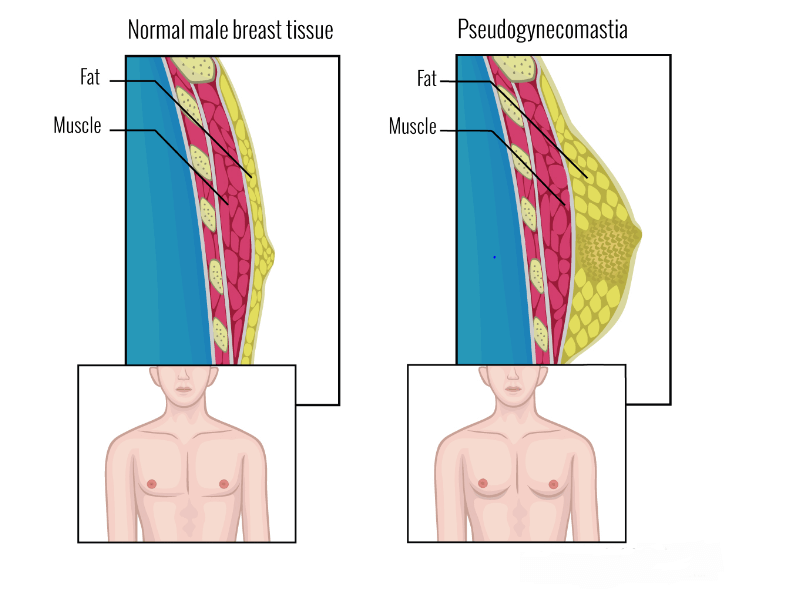
- Aesthetic Surgery
- Male Surgery
- Gynecomastia
Gynecomastia
In severe cases of Gynecomastia , the weight of excess breast tissue may cause the breasts to sag and stretch the areola (the dark skin surrounding the nipple). In these cases the position and size of the areola can be surgically improved and excess skin may be reduced
Gynecomastia is a condition of overdeveloped or enlarged breasts in men that can occur at any age. The condition can be the result of hormonal changes, heredity, obesity or the use of certain drugs.
Gynecomastia can cause emotional discomfort and impair your self-confidence. Some men may even avoid certain physical activities and intimacy simply to hide their condition.
Type of Gynecomastia :
- Excess localized fat
- Excess glandular tissue development
- Sometimes excess breast skin
- Presence unilaterally (one breast) or bilaterally (both breasts)

Type of procedure :
- liposuction
- partial gland resuction
- Mastopexy
Complication:
- Bleeding (hematoma)
- Breast asymmetry
- Breast contour and shape irregularities
- Changes in nipple or breast sensation may be temporary or permanent
- Fatty tissue found in the breast might die (fat necrosis)
- Fluid accumulation (seroma)
- Infection
- Poor wound healing
- Possibility of revision surgery
- Unfavorable scarring
Results:
Gynecomastia surgery results are immediately visible. Over time, post-surgical swelling will resolve and incision lines will fade. Satisfaction with your new image should continue to grow as you recover from surgery.
The final results of your Gynecomastia surgery may take 3-6 months to achieve. Incision lines are permanent, but will continue to fade over time.
Gynecomastia surgery scars:
Any surgical treatment to correct Gynecomastia will require incisions. While most incision lines are concealed within natural contours, some may be visible and are a necessary result of male breast reduction surgery.

